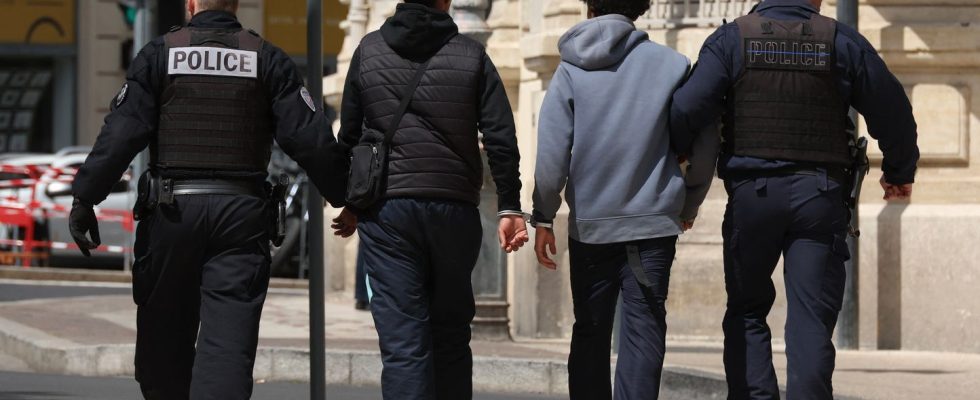Another deadly fight. Saturday afternoon, around 6 p.m., a 15-year-old teenager died after receiving several stab wounds in Châteauroux (Indre). A suspect, also aged 15, was arrested two hours later and taken into police custody. He was to be brought in this Monday in the company of his mother.
Not an isolated case, because several recent incidents of violence between young people have strongly influenced public opinion, such as the fatal beating in Viry-Châtillon (Essonne) of Shemseddine, 15, near his college. A series of cases which led the head of government, Gabriel Attal, to announce on April 19 a series of measures to deal with the “addiction to violence” of certain young people.
Are young people more violent than before? 20 minutes asked the question to sociologist Sébastian Rocher, research director at CNRS and author of the book The Unfinished Nation. Youth facing school and the police *.
Several serious cases involving minors have hit the headlines recently. Are there more cases of delinquency involving young people than before?
These facts do not reflect a general trend towards violence, either in society or among young people. These cases are not a general indication of how the company operates. It’s a bit like plane crashes. There are sometimes dramatic crashes, yet air safety has improved over time.
How exactly do we measure delinquency among young people?
You have to go through self-reported delinquency surveys. In France, they have existed since the end of the 1990s. We developed them because we know that police indicators for measuring trends are not good, except for homicides. I have led several that were publicly funded. For this I used the same method but at different times. This is the best way to know and count the authors, who have been guaranteed anonymity.
What do the results of these surveys say?
They are contrasting. Certain facts are decreasing, such as cannabis consumption among young people – which is confirmed by an OFDT study – property crimes and theft. Cases of theft with intimidation, that is to say racketeering, are stable, as are threats. We are also seeing the emergence of new forms of delinquency such as Internet harassment.
Finally, I have seen no indication of an increase in the number of homicides among minors, who are only small contributors. If we aggregate all these indicators, we observe a downward trend in cases of delinquency involving young people.
How then can we explain this form of hysteria around this subject?
We have a sensitivity to violence that continues to develop. All forms of violence are experienced differently today than forty years ago. This is the case for police violence, violence against women… But also for youth delinquency.
We are right to be outraged, but we are wrong to generalize these matters. The problem is that politicians take up this issue and talk about it in the media. They turn a social problem into a political issue. This then triggers competition between the media to cover events, especially frightening ones. These are the ones that attract the most and shock the most morally.
There is a very strong dramatization of the explanation. Since the 15th century, the number of homicides has been divided by 30. So when some commentators speak of decivilization, it is an abuse of language. This decline is not linear. There are sometimes small spikes. They are linked to terrorism or score-settling between criminal organizations, but certainly not to youth delinquency.
So young people today are not more violent than their elders?
There is no trend showing an increase in the most serious incidents. Young people aged 17 to 25 are particularly represented in delinquent activity, particularly in street crime, which is the most visible. At this time of life, we have a concentration of violence. This does not mean that it increases over time, but it is more common at this age.
The government is considering several measures, including imposing a curfew for minors under 13 years old. What do you think ?
This is part of the media strategy which consists of announcing things which we know will not have much effect. But it demonstrates a moral posture.
When we are really interested in the phenomenon of juvenile delinquency, we observe that there is an effect of the socio-economic environment. If you come from a disadvantaged family and live in a disadvantaged neighborhood, you have a maximum risk of being drawn into delinquency. If you grow up in a quiet neighborhood with wealthy parents, you are little exposed to these phenomena. This is what we need to work on.
* “The Unfinished Nation. Youth facing school and the police”, by Sebastian Roché, Grasset, 400 pages, 22.50 euros.

